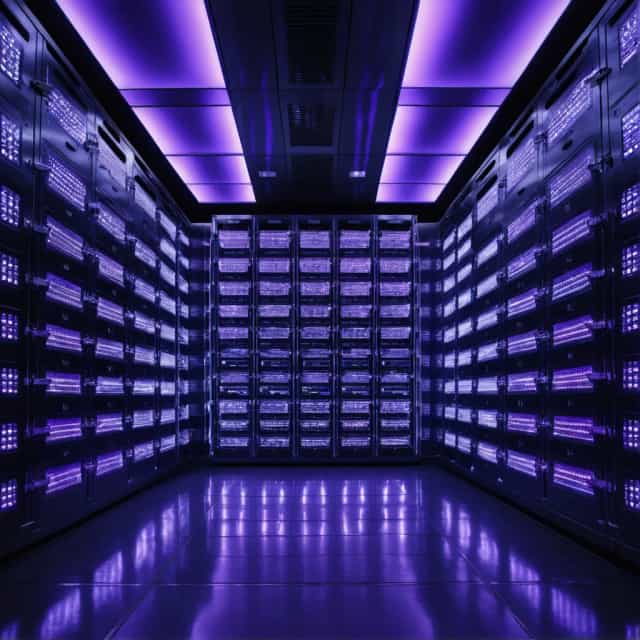
Image source: Block Media
SoftBank Chairman Masayoshi Son Predicts AI's Tremendous Economic Impact: Nvidia Is Still Undervalued
Masayoshi Son, the Chairman of SoftBank, has doubled down on his vision of artificial intelligence (AI) as a game-changer for the global economy. In a recent interview with Bloomberg, shared on X (formerly Twitter) on October 7, Son projected that Artificial General Intelligence (AGI) or Artificial Superintelligence (ASI) could replace 5% of the global GDP within the next decade. He also asserted that Nvidia (NVDA), a key player in AI infrastructure, remains undervalued despite its dominant position in the market.
Son described his forecast of AI replacing 5% of global GDP as "conservative." He emphasized that the total economic impact of AI could substantially exceed this estimate, showcasing his unwavering confidence in the transformative potential of AGI and ASI technologies.
“Today, 5% of global GDP translates to approximately $9 trillion annually,” Son explained, stressing how this massive economic value could offset the costs of establishing the necessary AI infrastructure. According to his calculations, the global expense of building such infrastructure could reach $9 trillion, but this investment could potentially pay for itself within just a year of realization.
Capitalizing on AI's Economic Promise
Son argued that the investment required in AI is minimal compared to the returns it promises. “If AI infrastructure generates $9 trillion annually in revenue and achieves a 50% profit margin, the net profit could reach $4 trillion per year,” he stated.
These staggering revenue projections illustrate the immense financial benefits that advanced AI systems and ecosystems could deliver. They further validate Son’s position that Nvidia, as a supplier of essential technology for the AI era, is undervalued. Son stated, “Nvidia's share price does not currently reflect its long-term potential as a cornerstone of the AI infrastructure.”
Nvidia has already emerged as a leading manufacturer of AI-centric hardware and software, including GPUs that are integral to machine learning and AI processing. Son’s strong endorsement positions Nvidia as central to AI's future economic expansion, reinforcing its pivotal role in supporting AGI and ASI development.
Optimism Meets Skepticism
While Son’s bold predictions have renewed excitement about AI's economic possibilities, they have also sparked a lively debate among experts and critics. Some skeptics argue that assuming AI will replace 5% of the global GDP within a decade is overly ambitious and does not sufficiently consider external factors such as geopolitical challenges, regulatory barriers, and societal acceptance of widespread AI adoption.
Regulatory concerns are particularly pronounced in areas such as AI ethics, data privacy, and algorithmic biases. Governments and institutions worldwide are grappling with how best to harness AI's potential while keeping its risks in check. Similarly, societal apprehension about the disruptive nature of AI might slow its adoption, especially in industries with significant human workforce dependencies.
Despite these challenges, Son remains steadfast. "The future is much bigger than we imagine," he declared confidently, dismissing concerns that his projections might be too optimistic. His vision of AI reshaping the global economy continues to guide investor sentiment, positioning AI as an unrivaled growth sector in technology and innovation.
Nvidia’s Strategic Role in the AI Transformation
Son’s statement has further highlighted Nvidia's critical contributions to the flourishing AI industry, reinforcing the belief that the company’s potential is far from being fully tapped. As AI systems become more sophisticated and demand for high-powered computing infrastructure skyrockets, Nvidia’s dominance in producing advanced GPUs and AI software solutions places it firmly at the center of the AI revolution.
Furthermore, Nvidia’s partnerships with leading AI developers such as OpenAI and DeepMind establish its essential role in driving forward innovation in AGI and ASI. These alliances are pivotal in aligning cutting-edge research with scalable infrastructure capable of bringing transformative AI capabilities to global markets.
Conclusion
Masayoshi Son's vision for artificial intelligence is ambitious yet grounded in economic calculations that underscore its vast potential. His projection that AI could replace 5% of global GDP in the next 10 years—amounting to $9 trillion annually—highlights the monumental opportunity for industries to embrace AGI and ASI technologies.
While critics raise valid concerns about the feasibility of such forecasts and the external challenges AI may face, Son’s confidence in the sector remains unshaken. His bullish stance on Nvidia being a cornerstone of AI infrastructure has reignited enthusiasm among investors and market analysts.
As AI continues to evolve and reshape industries worldwide, companies like Nvidia stand poised to capture the lion’s share of the economic value this transition brings. Son’s optimism acts as a compelling reminder of the transformative possibilities AI holds for the global economy, making it a critical space for businesses and governments alike to monitor and invest in.










